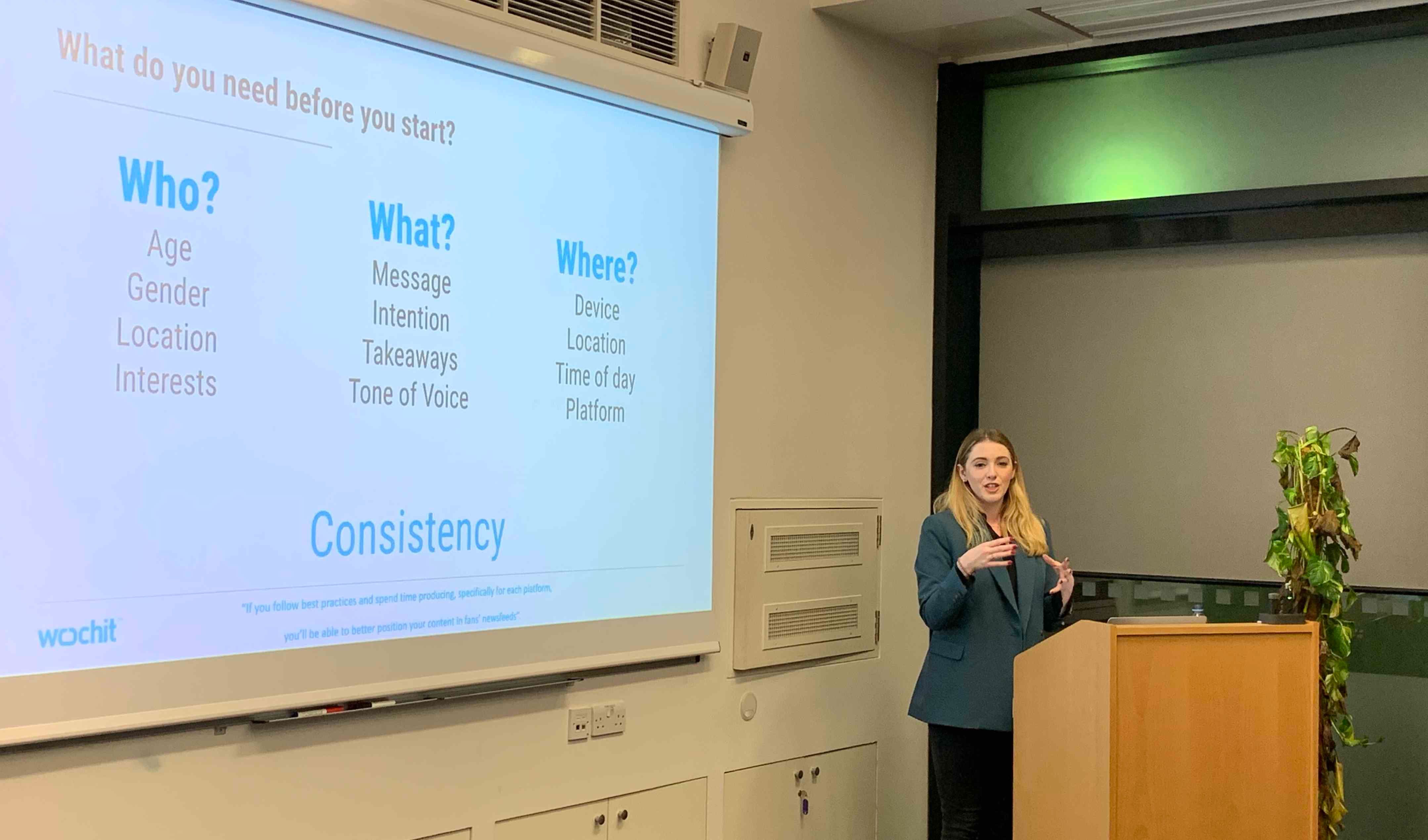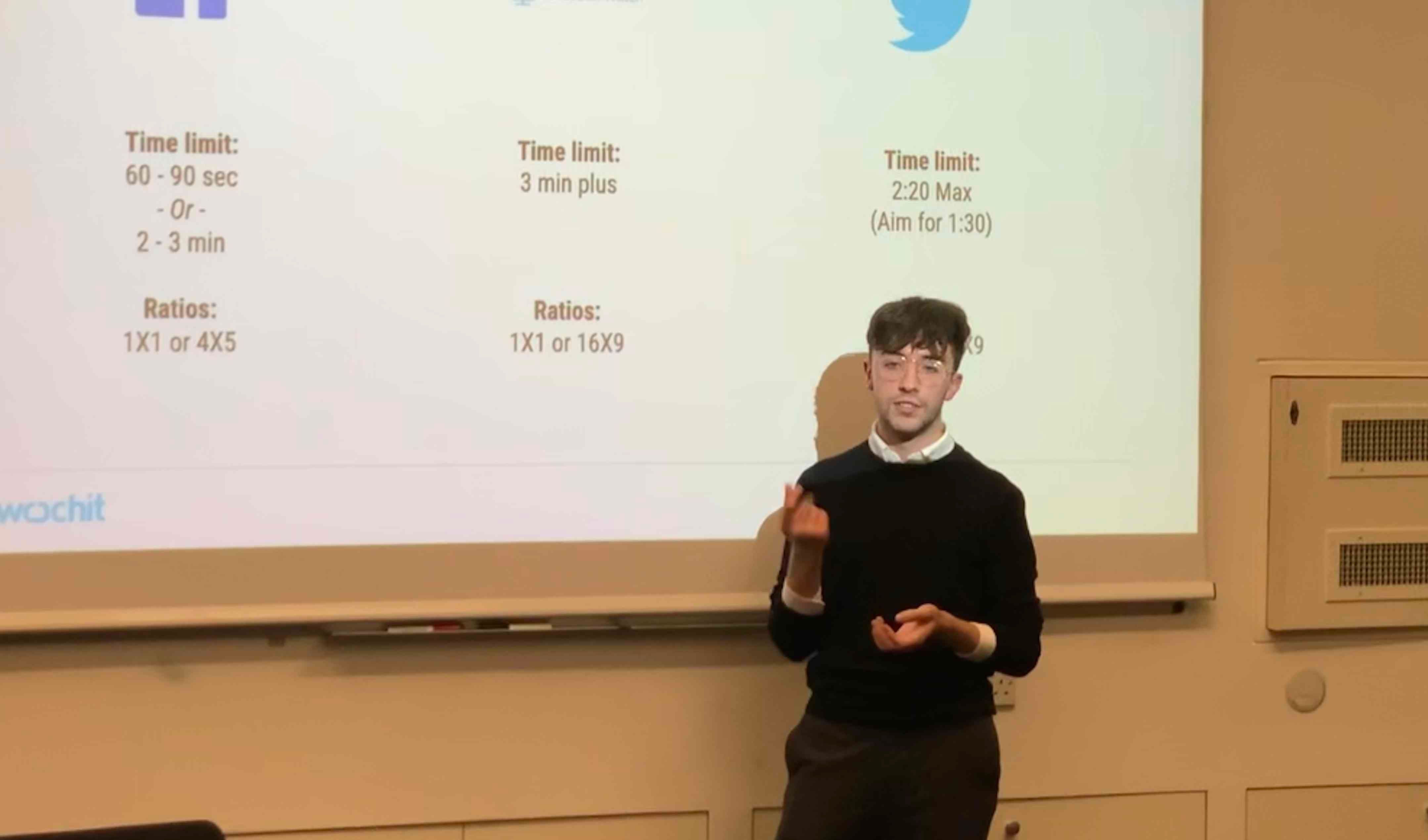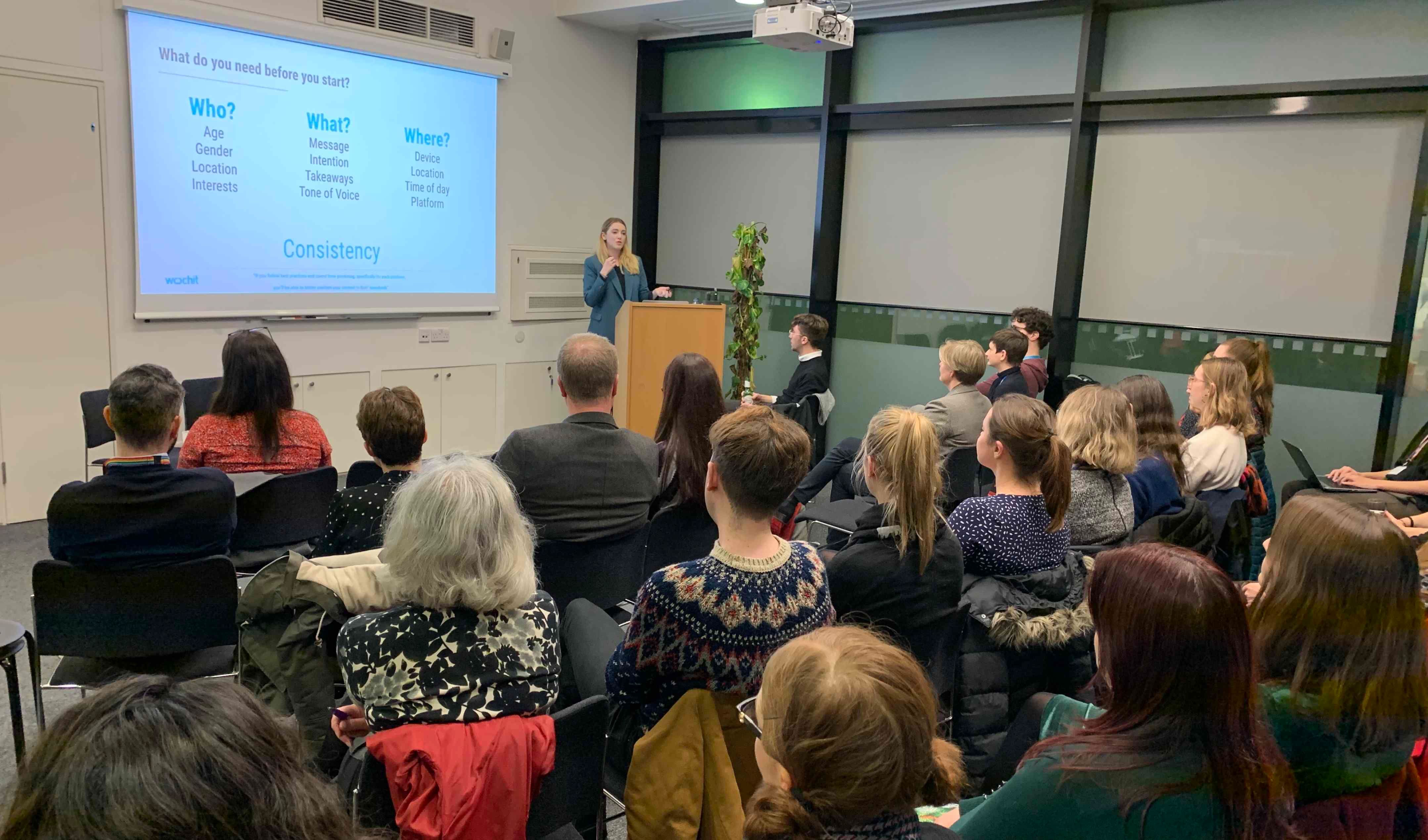Video storytelling (12.12.19)
About the event
For the last Communications Network catch up of 2019 we were joined by Jamie Davies and Joanna Boyd from video creation platform Wochit to discuss trends in video storytelling. Here are the key takeaways in video format, or read below for the full info:
6 things we learnt about video storytelling
1. Everyone loves stories, but not all stories are created (or told) equal
Stories are an important part of how we communicate with one other. Social media allows everyone to be a digital storyteller and as platforms expand the ways users can share content, it’s no surprise brands have been quick to capitalise.
While it is hard to beat the impact of a story being told face-to-face, video can come pretty close. Videos, when shared on social media, hit all four key learning types – visual, aural, reading and kinaesthetic. This is why a message conveyed through video is remembered more than 82 per cent better than through text alone.
2. Consider the end at the beginning
As with most projects, having a plan before you start will get you a long way. Before you start filming or producing your video, ask yourself the following questions:
- Who is this content aimed at? (Consider age, gender, location and interests.)
- What are the key points I want my viewer to take away?
- How will I tell the story? (Through humour or hard-hitting stats? What specific tone of voice?)
- Where will the viewer be when they view this and what platform will they be viewing from?
This will shave time off how long it takes you to produce your video and make evaluating its success much more straight forward.
3. Consistency is key
If you start a series, stick with it. If your content resonates with your audience, they will return for more. To make it easiest for them to find, post similar content at similar times of the day.
4. Think you can't write for video? You probably already have
Videos follow the same story structure as a written news piece:
- They start with a headline to capture the viewer’s attention
- Followed by a subheading or standfirst, telling the viewer what they are about to watch
- Then comes the bulk of the story/video, where you detail the key information, stats and potentially throw in a quote
- Rounding off the video with a clear message or call to action.
5. There's a time and a place for all content
Each platform has optimal video dimensions and durations. See Wochit’s recommended ratio and time limit for each platform below:
Social channels:
- Facebook: Time limit (60-90 secs or 2-3 mins); ratios (1x1 or 4x5)
- Facebook Watch: Time limit (3 mins plus); ratios (1x1 or 16x9)
- Twitter: Time limit (2:20 max, but aim for 1:30); ratios (1x1 or 16x9)
- Instagram: Time limit (aim for 45 secs); ratios (1x1 or 4x5)
- Instagram Stories: Time limit (15 secs max, but aim for 10 secs); ratios (9x16)
- Instagram Stories: Time limit (aim for 1-5 mins); ratios (9x16)
6. Imperial staff can create unlimited videos using Wochit
Wochit is an online video production platform that allows users to easily and quickly create engaging and high-quality videos.
To receive access and training contact Andrew Youngson – a.youngson@imperial.ac.uk



